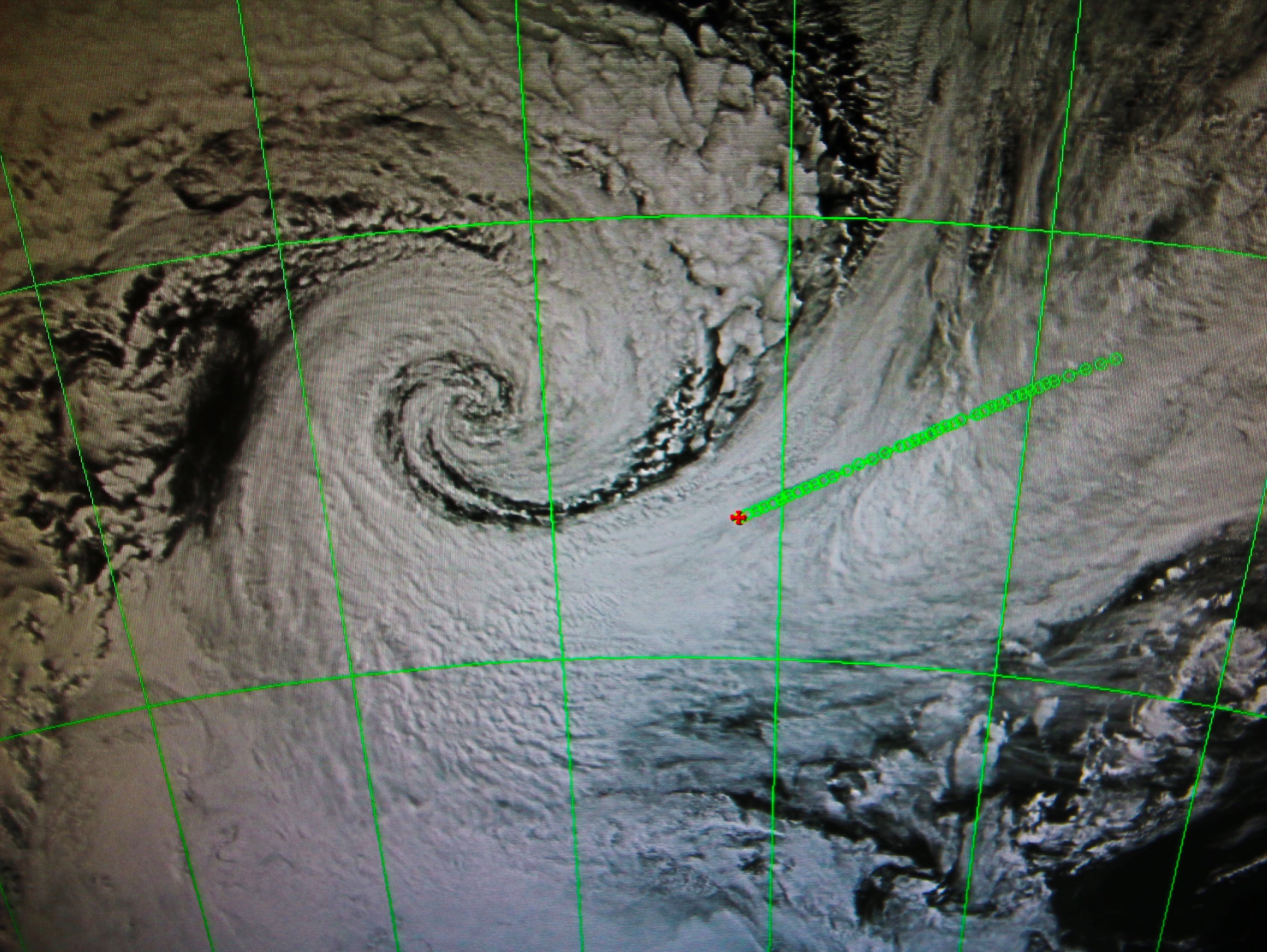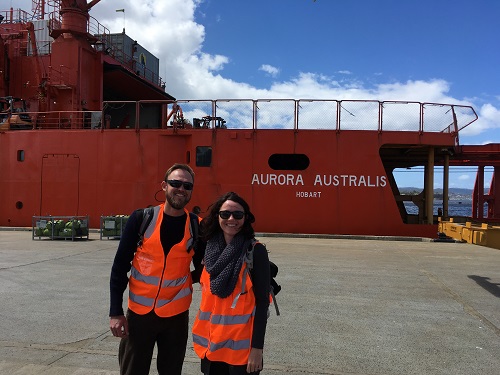Life on the ice: forecasting in Antarctica
25 January 2017
This Australia Day we're celebrating life and weather at our southernmost reaches—the Australian Antarctic Territory. Our forecaster, Rachel McInerney, shares her experiences from the icy continent.
Antarctica is an amazing place, and I am very privileged to be working as a forecaster at Davis station this summer. Australia Day is an important occasion here—it's the day of the summer swim. Here at Davis we have a lovely beach, but that's about the only thing that invites a dip in the ocean, with the water temperature sitting at around 0 °C! Most of us brave the conditions though, to be a part of this Antarctic tradition. The remainder of the day is about trying very hard to get warm, playing cricket on the beach, enjoying a barbie and listening to Triple J's hottest 100. Not much different to being at home really!
My journey to Antarctica began on the ship Aurora Australis, and we were lucky to have relatively smooth seas. We had one particularly magical day as we voyaged south, seal and penguin spotting as we cruised through our first encounter with sea ice. Huge icebergs were sailing past, there were elegant sea birds, a stunning sunset and then a spectacular display of the aurora australis once the skies darkened. It just doesn't get any better.

Image: Navigating the sea ice on the Aurora Australis.
It's not all play on the ship though—we were providing daily forecasts to the crew and expeditioners—a mix of scientists, tradies, and support staff. There were about 90 expeditioners and 20 or so crew on board—the ship was packed pretty tightly. We had some great chats with the captain about upcoming low pressure systems and what we could do to avoid them. The satellite image below shows the day the Aurora's captain skilfully 'threaded the needle' of this spiralling low pressure system to avoid the strongest winds and heaviest seas to its north. It's always great to see such a tangible result from the forecasts we produce.

Image: The green track shows the course of the Aurora Australis through the powerful low pressure system.
We arrived at Davis after a couple of weeks at sea, and you couldn't wipe the smile off my face! It has been a few years since I was first there, and it felt like a happy homecoming. With all the ‘fast’ (attached to land) ice around Davis and an Adélie penguin breeding colony just offshore, there have been many penguin visitors to the station—and we have visited them in return. Trips across the sea ice to nearby islands have been a highlight. The penguins never fail to entertain, jumping and sliding across the ice, and the scenery is just spectacular.

Image: An Adélie penguin—just one of the wildlife companions with whom expeditioners share the ice.
The snow has gradually melted over the rocky terrain around Davis, allowing expeditioners to get out walking and running. There's nothing like going for a run in Antarctica: passing Adélie and emperor penguins on the way, looking out over the sea ice and watching a Weddell seal loll about, all while Wilson’s storm petrels flit about the rocks beside you—it becomes an exercise in self-preservation to remember to look down at where your feet need to go next!
This summer we have had some great weather at Davis. Even though Antarctica is very remote, forecasters have access to satellite imagery, model data and weather observations. We combine all this information to provide forecasts to Australian Antarctic stations and, most importantly, to support the Australian Antarctic program's aviation operations. We work as part of a great professional team to support science projects across a large area of Antarctica, and it's a wonderful opportunity as a forecaster to have direct contact with the people who are most impacted by the weather and your forecast. There's great professional satisfaction in seeing a happy team of scientists who have achieved all their project goals. And thankfully there haven't been too many awkward dinner-time conversations about the weather not behaving as expected!
Over the next few weeks there are many plans to get out walking among the Vestfold Hills and stay overnight in the network of huts around Davis. This is one of my favourite things to do and Davis is perfectly placed on a rocky outcrop to allow for safe and scenic hiking—there is a lot more rock than snow in this tiny corner of the continent. As I sit here writing, the sea ice in front of station is looking more and more likely to blow away, which means we'll be able to get some boats out on to the water soon. Iceberg cruises are a completely surreal experience: travelling around in small boats on glassy water, going from one stunning iceberg to the next (some with Adélie penguins), on the lookout for seals and—if we're really lucky—maybe an orca?!
Apart from the professional challenges and the jaw-dropping scenery, the other major factor in Antarctic life is the amazing community. If you're looking to live and work with a bunch of people who are great at their jobs, have an optimistic outlook on life and a huge variety of experience behind them, then Antarctica is the place for you! People look out for each other, there's always something social going on and everyone works together—it's something we get less of living in big cities these days, and it's a great way of life.

Image: Life in Antarctica is shared with a supportive community.
About Rachel
I came to meteorology via an arts and a science degree at the University of Melbourne. I was attracted to the practical everyday application of physics and maths (rather than just the theory)—and who isn't interested in the weather? It affects us every day and I enjoy being a part of that service to the community. I have worked as a forecaster in Darwin and Hobart, and this is my second summer season as a forecaster in Antarctica. This place is the stuff of nature documentaries and I have wanted to visit since I was at school. The Bureau provides an amazing opportunity not only to visit, but to live and work in Antarctica, allowing you more time to appreciate the experience, while at the same time living in a rewarding community and contributing to the Australian Antarctic program.
More information
Interested in working in Antarctica? Our recruitment for season 2017–18 is open now.
Antarctic and Southern Ocean weather
Australian Antarctic Division runs the Australian Antarctic program, provides information about living and working in Antarctica and also advertises job vacancies.


Comment. Tell us what you think of this article.
Share. Tell others.